High-altitude garden in bloom at Santa Fe Botanical Garden
Two weeks ago today we drove west on a spontaneously planned, cutting-it-close-with-the-first-day-of-school, two-week road trip through West Texas, northern New Mexico, and western Colorado. One of our early stops was Santa Fe, New Mexico, a beautiful old city we once regularly visited but hadn’t seen in 16 years. One of its newest attractions, opened in 2013, is the Santa Fe Botanical Garden.
Sited close to town on Museum Hill, the garden — still in its infancy, with only Phase 1 open at this time — makes for a pleasant hour-long meander under china-blue skies, with the rugged folds of the Sangre de Cristo Mountains visible in the distance.
Although the terrain is high desert semi-arid steppe (Santa Fe’s elevation is 7,199 feet), the sun-washed garden appears surprisingly lush with roses, lavender, switchgrass, agastache, and mullein.
Sparingly used as accents, cacti like eye-catching ‘Snow Leopard’ cholla (Cylindropuntia whipplei ‘Snow Leopard’) stand out beautifully, especially against the wine-colored blossoms of Mojave sage (Salvia pachyphylla) and reddish-pink sandstone walls.
I love that peachy-pink color echo!
Low walls create small garden rooms furnished with benches.
My daughter tries one out next to a stunning Mojave sage.
Any chance this can tolerate the Gulf of Mexico humidity and drenching rains of Austin? I wish! (See High Country Gardens for its listing, which suggests annual rainfall of 10-20 inches.)
Sometimes you have to get low to get a shot of a cool plant.
Here’s her quarry: a little prickly pear with valentine-like pads.
Warm-hued paths of decomposed granite edged with sandstone lead in straight lines through the main garden. Stone blocks add extra seating and natural accents.
Mullein and switchgrass
Agastache
Straight-line gravel and flagstone paths divide the main garden into a grid, with an orchard of fruit trees and an eco-lawn of native turf grasses anchoring the center.
Peach tree
In long borders on each side, shrub roses and lavender add color and fragrance.
Bees were working the lavender.
Roses and lavender, a treat for the nose
Another view of the orchard and lawn
Geranium ‘Rozanne’…
…and hardy plumbago (Ceratostigma plumbaginoides) seem right at home here too.
Bluestem ephedra (Ephedra equisetina) caught my eye with its slender, upright, blue stems that are reminiscent of horsetail. Although dry loving, it’s clearly a spreader.
Several contemporary sculptures were on temporary display during our visit, including this one by Bill Barrett.
A wider view, with boulder-like sculptures by Candyce Garrett, part of the garden’s permanent collection
‘Radiant’ crabapple (Malus × ‘Radiant’), laden with rosy fruit against green and gold leaves (turning already?)
One more
We just missed by a couple of months the opening of Phase 2 of the garden, Ojos y Manos: Eyes and Hands, “a place to explore ethnobotany – the shared history of humans and plants in northern New Mexico – through hands-on experiences and observation.” Just across the red bridge — the 100-year-old Kearny’s Gap Bridge, relocated from Las Vegas, NM — workers were busily moving soil and stone and preparing planting beds for the projected October opening.
Back at the entrance, we rested in the shade of a tall-backed stucco banco, next to a trickling wall fountain.
Across the patio, a stylized ramada of rusty steel poles and bundled sticks crisscrosses over benches, offering little shade but creating interesting shadows.
Landscape architect W. Gary Smith, who designed the family garden at Austin’s own Lady Bird Johnson Wildflower Center, designed Santa Fe Botanical Garden “to demonstrate environmentally sustainable gardening.” I’m sure it must already be inspiring locals to plant many of the beautiful plants on display here. I look forward to visiting SFBG again one day to see how it has matured.
Up next: Sightseeing in Santa Fe.
I welcome your comments; please scroll to the end of this post to leave one. If you’re reading this in a subscription email, click here to visit Digging and find the comment box at the end of each post.
_______________________
Digging Deeper: News and Upcoming Events
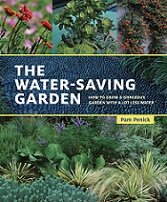
All material © 2006-2016 by Pam Penick for Digging. Unauthorized reproduction prohibited.


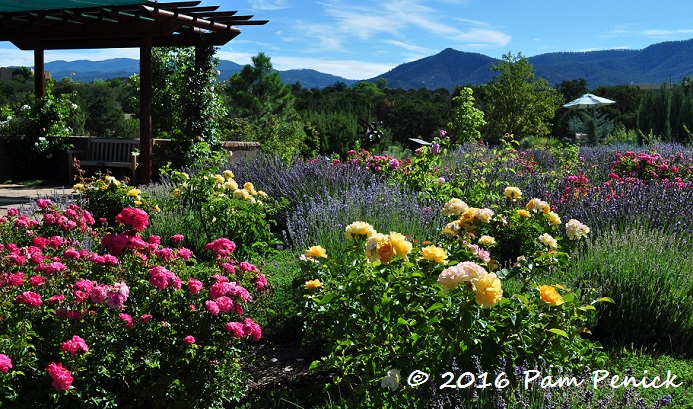
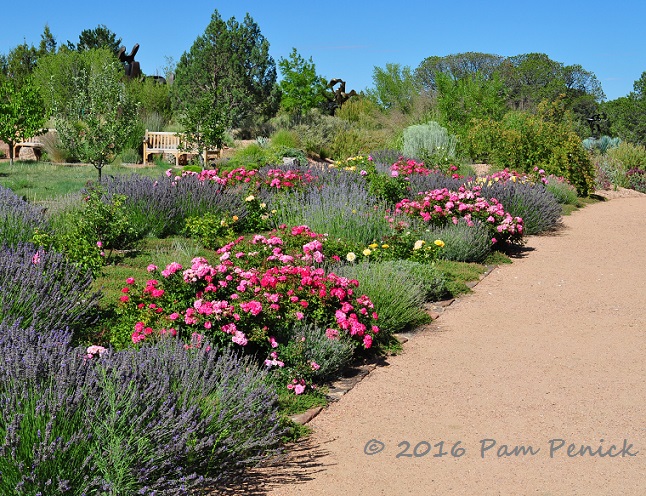
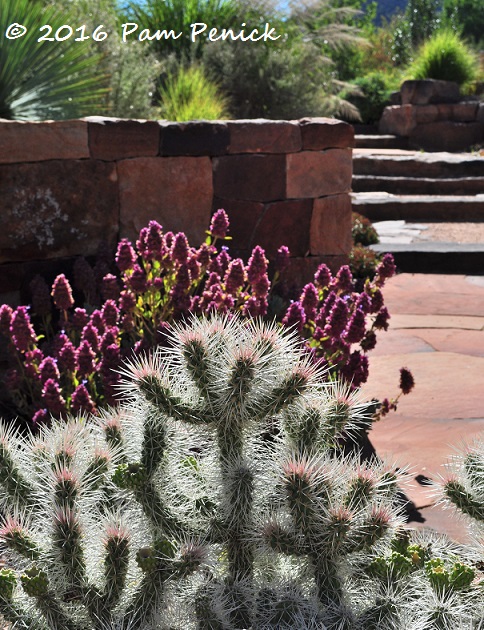
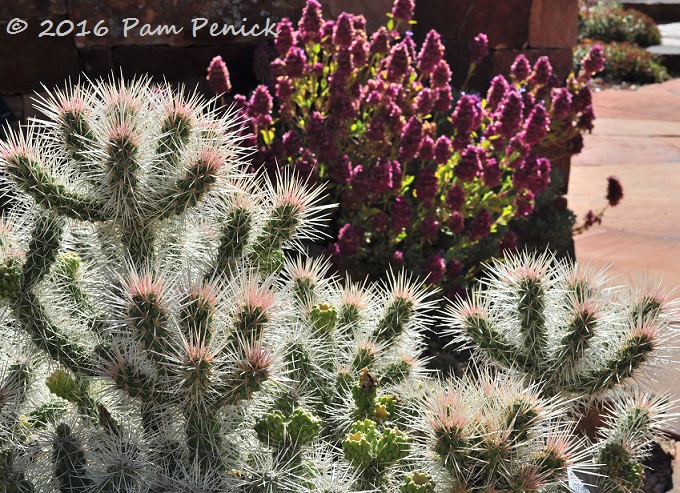
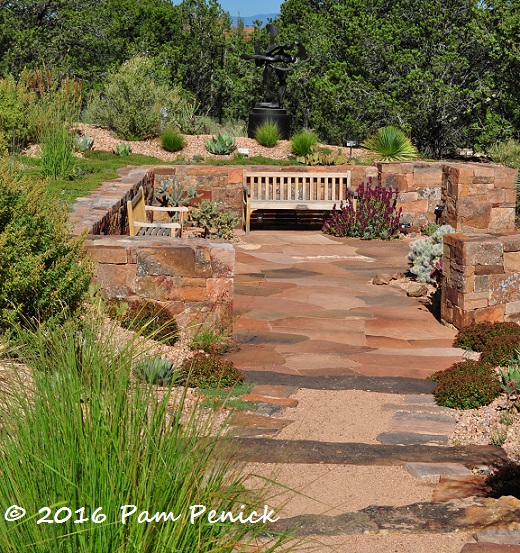
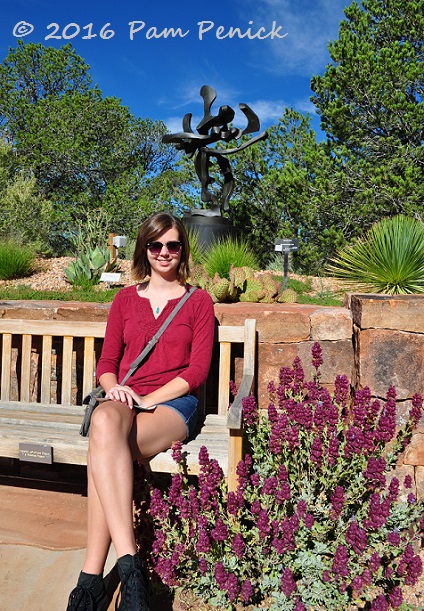
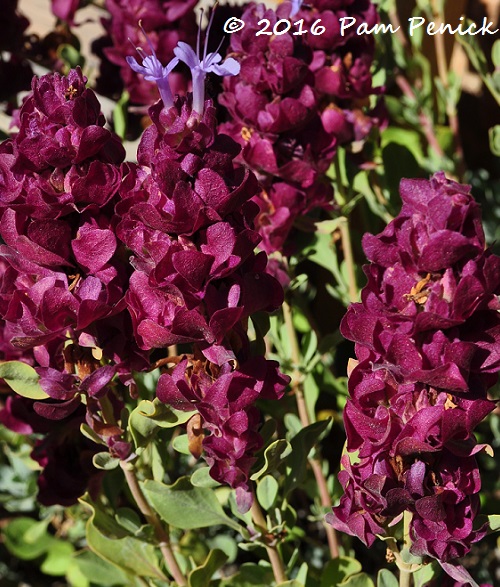
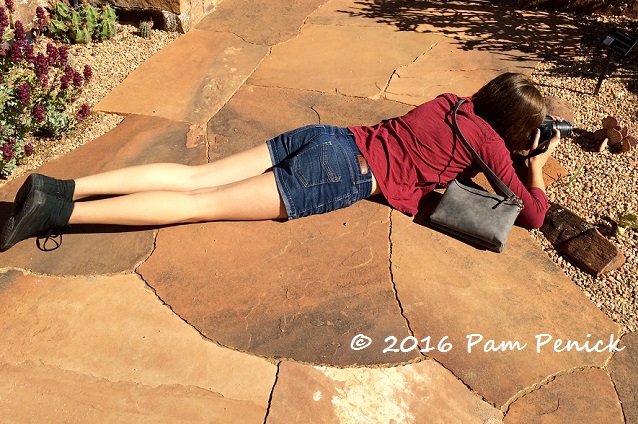
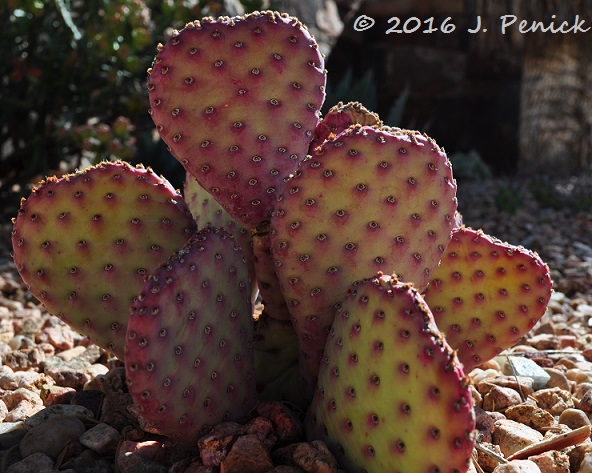
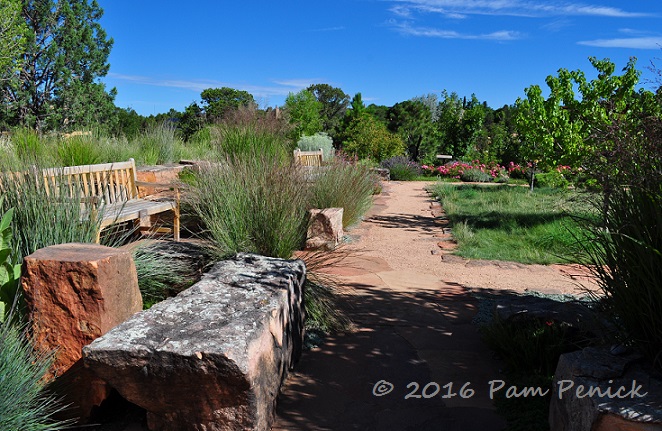
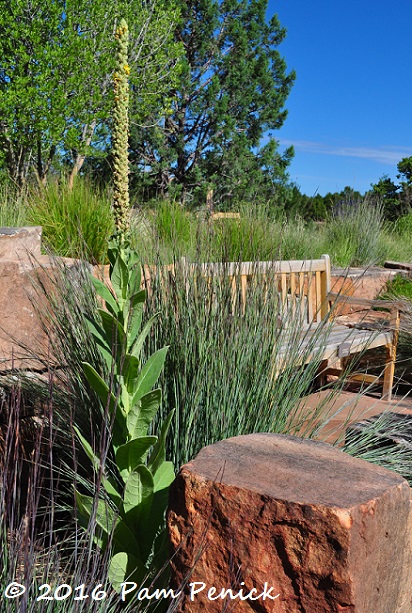
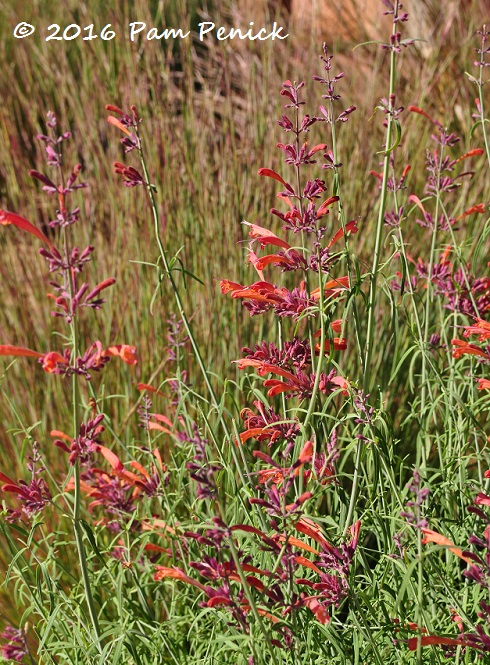
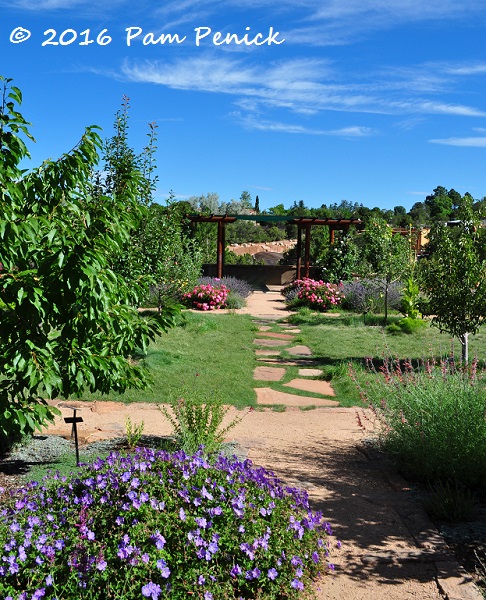
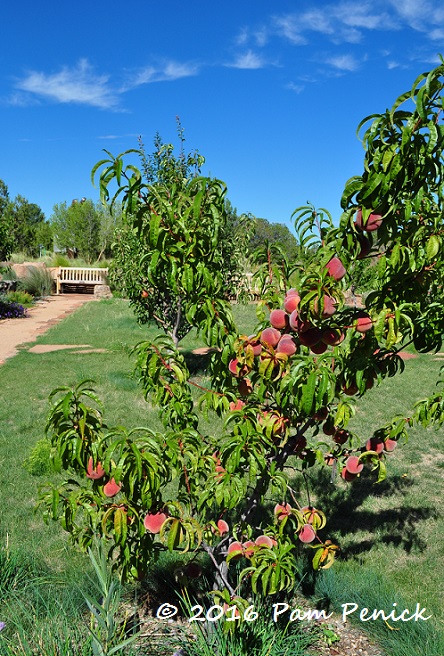
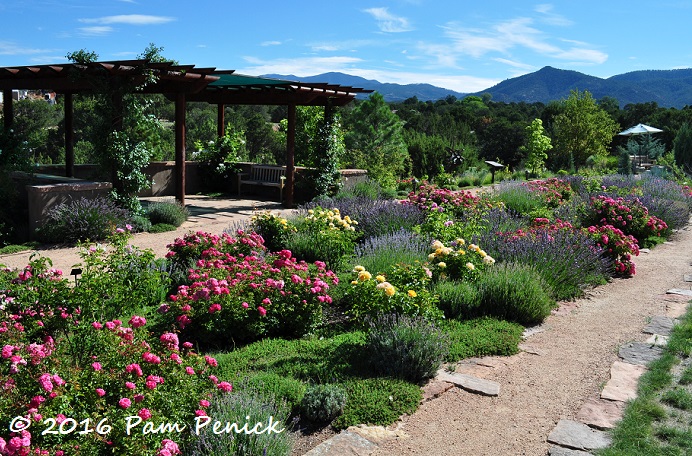
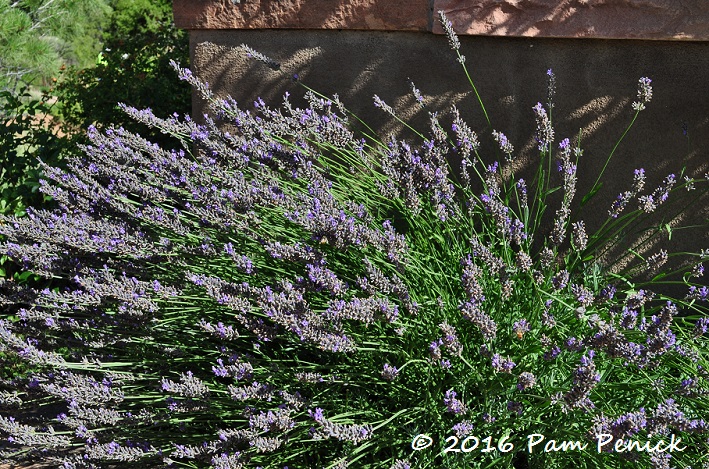
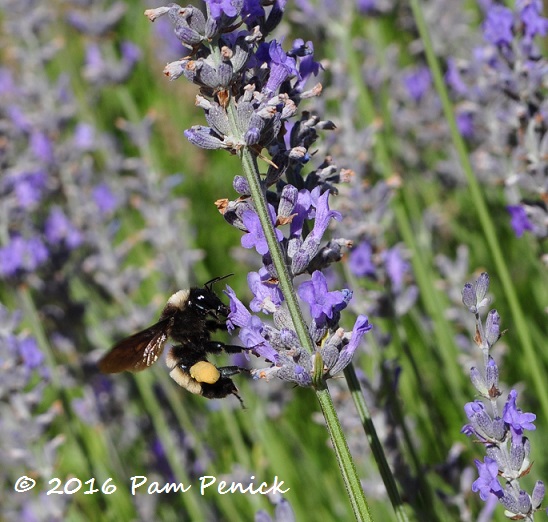
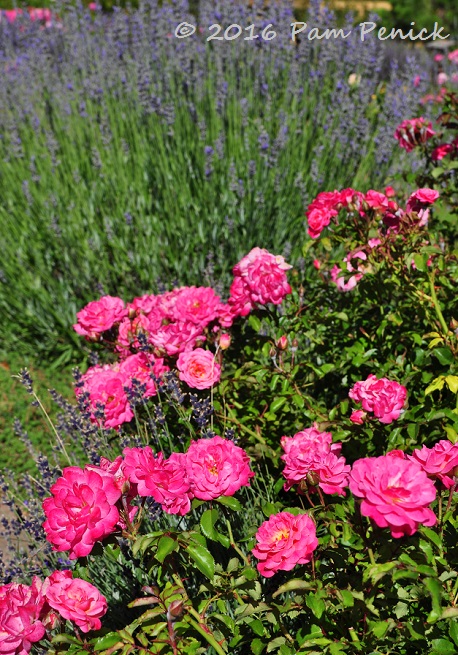
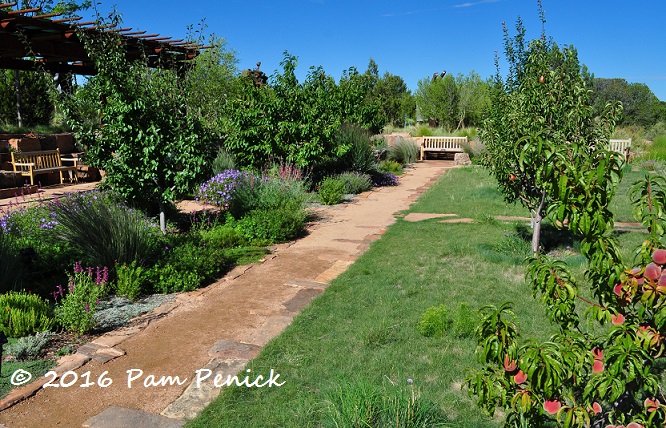
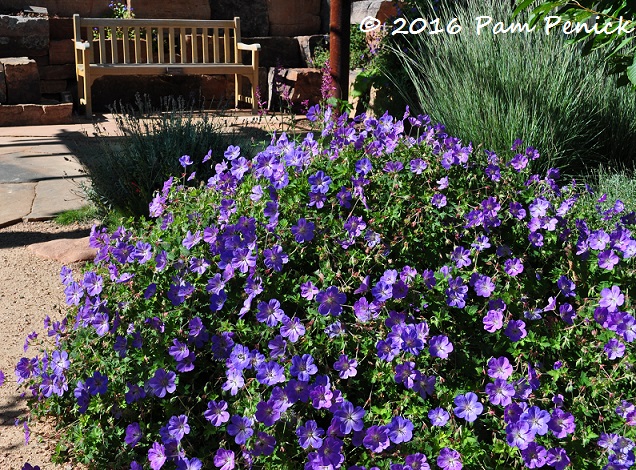
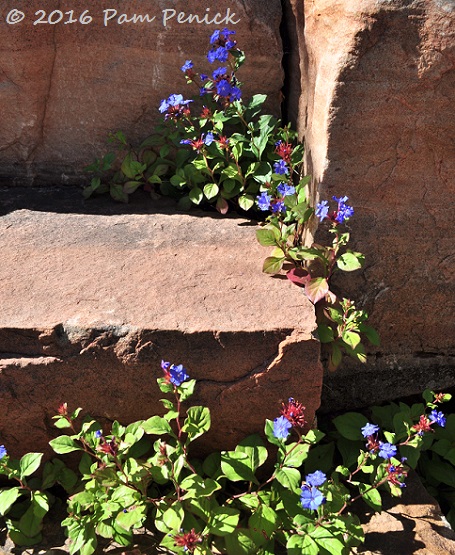
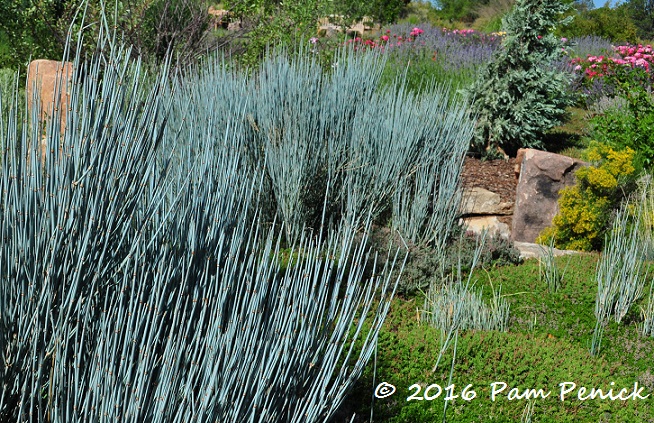
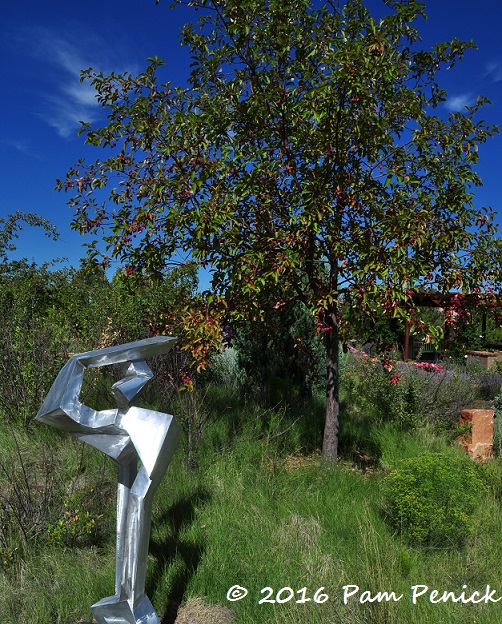
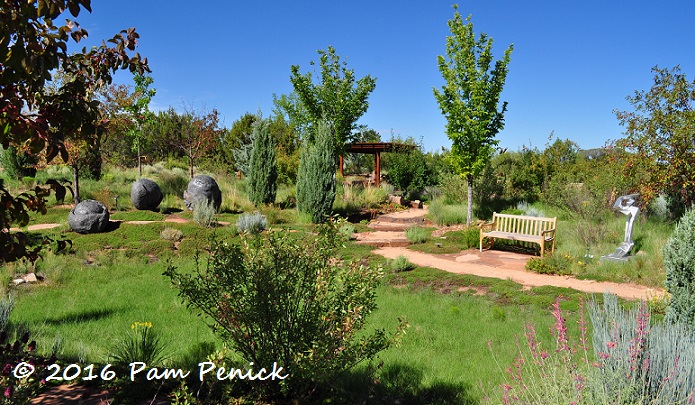
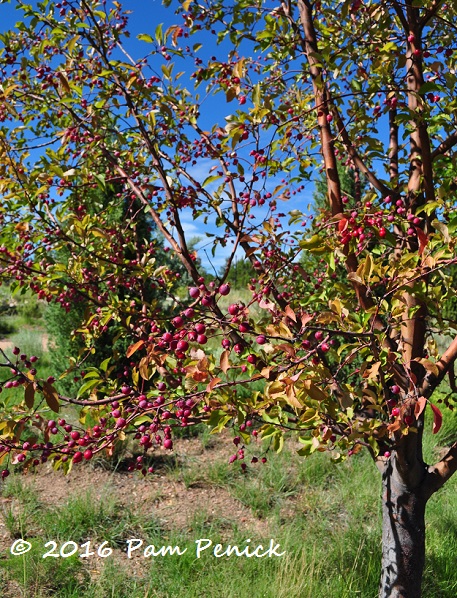
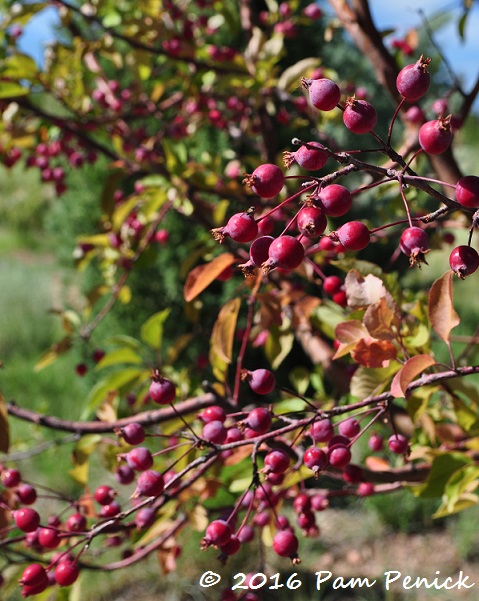
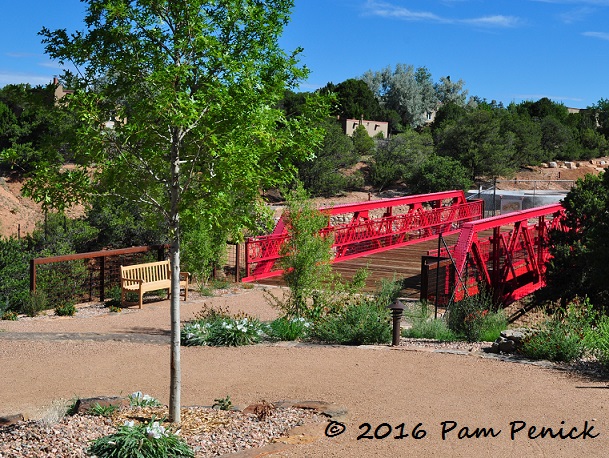
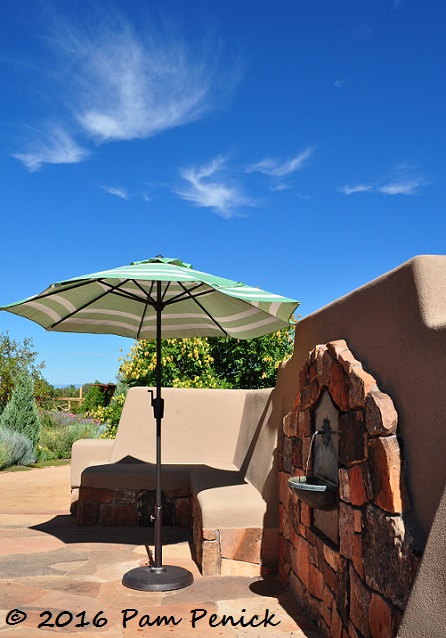
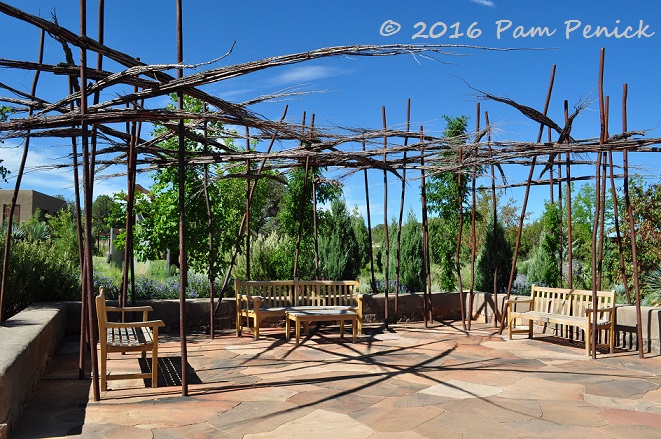
For a relatively young botanic garden it looks surprisingly mature. And for mid-summer, it’s remarkably colorful! thanks for sharing your trip, Pam!
The growing season at that elevation is probably pretty short, so summer is colorful. I saw lots of hollyhocks and roses in bloom all over town. —Pam
Beautiful! I just love a desert garden. Maybe partly cuz I don’t like mud? Haha It looks so dry and clean and cheerful… And the color of that sky makes me feel happy! Awesome garden, thank you for sharing!
Not that I’m complaining about rain, but we have had some mud here lately, haven’t we? Dry Santa Fe is quite the contrast. —Pam
Oh, wow! I liked ALL of it and I’m not a desert plant fan. I’d actually take that prickly pear cactus into my garden. –SO pretty.
I honestly think Austinites tend to use more spiky plants than I saw in Santa Fe, which surprised me. —Pam
For a new garden, it looks established, in an open and welcoming way. Would love to walk thru it!
I never tire of seeing new gardens, Diana. This one was small but a lovely treat. —Pam
That’s a new garden, eh? It sure doesn’t feel new – it has the spirit of something enduring. What a beautiful place, I look forward to seeing it myself someday. Many of these plants we grow here in Portland, it’s interesting to see just how apparently drought-tolerant they really are.
They probably enjoy your dry summers and mild winters, Tamara? —Pam
What a wonderful garden – that rose and lavender border is incredible!
And when it comes to taking photos, like mother like daughter….love it 🙂
Aw, thanks, Margaret. 🙂 —Pam
Pam, I bet that Mojave sage might work in Austin (and Dallas) if you gave it superfast drainage by planting it in almost pure expanded shale with just a handful of compost mixed in. BTW, did you happen to get the variety name of the shrub rose used so extensively in the garden?
Perhaps so, Peter. Maybe someone reading this has tried it in Texas and can let us know!
I didn’t see a plant tag on the shrub roses or I’d have taken a photo for reference. Probably I just missed it though because the garden was otherwise well labeled. —Pam
Actually, I just located a plant list for the Orchard Garden (dated 2010), and it shows quite a few roses used there:
Rosa Climbing Iceberg
Rosa glauca
Rosa Golden Wings
Rosa Julia Child
Rosa Mary Rose
Rosa New Dawn
Rosa Pat Austin
Rosa Pink Drift
Rosa rubiginosa
—Pam
Thanks, Pam. Of the roses you listed, it would have to be Mary Rose, a David Austin creation. It is one of four Austin roses on that list.
Sorry, make that three Austins.
Thanks, Peter. —Pam
What a beautiful place. It is inspiring.
I’m glad you enjoyed the pics, Lisa. —Pam
Ok, I laughed when I read your thought about that sage – gorgeous! And never would it make it here! For being so new, it’s a beautiful garden already.
Sigh, probably not. Although Peter from Dallas is hopeful. I need him to make a trial for me. 😉 —Pam